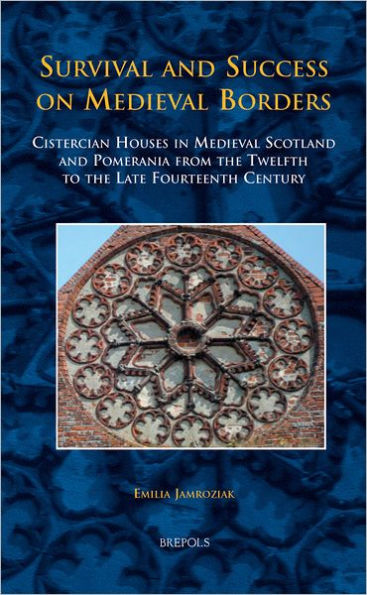Survival and Success on Medieval Borders: Cistercian Houses in Medieval Scotland and Pomerania from the Twelfth to the Late Fourteenth Century
This comparative study analyses Cistercian strategies on the northern and north-eastern frontiers of medieval Europe. Through case studies of six houses in Pomerania and Neumark (Kołbacz, Marienwalde, and Himmelstadt) and on the Scottish-English border (Melrose, Dundrennan, and Holm Cultram), the author traces the development of social networks around these monasteries within their own regions and across borders, and explores the importance of the international Cistercian networks for communities located in these politically sensitive areas. Very different socio-economic conditions in the regions under discussion resulted in quite different strategies of land accumulation by Cistercian monasteries in Scotland and Pomerania, which in turn had a lasting impact on their relationships with their neighbours. The author also examines the role of these abbeys in wider ecclesiastical politics and in relation to the key issues of the time: church reform and the expectations of the order's lay patrons and benefactors. In the fourteenth century, all of the abbeys experienced war, violence, and long-term instability. Their responses to these threats and difficulties are significant for our understanding of monastic strategies in hostile environments. Above all, this study shows how a Cistercian model was adapted to fit the complex political, cultural, and ethnic contexts of the southern Baltic, Northern England, and Scotland.
1102011638
Survival and Success on Medieval Borders: Cistercian Houses in Medieval Scotland and Pomerania from the Twelfth to the Late Fourteenth Century
This comparative study analyses Cistercian strategies on the northern and north-eastern frontiers of medieval Europe. Through case studies of six houses in Pomerania and Neumark (Kołbacz, Marienwalde, and Himmelstadt) and on the Scottish-English border (Melrose, Dundrennan, and Holm Cultram), the author traces the development of social networks around these monasteries within their own regions and across borders, and explores the importance of the international Cistercian networks for communities located in these politically sensitive areas. Very different socio-economic conditions in the regions under discussion resulted in quite different strategies of land accumulation by Cistercian monasteries in Scotland and Pomerania, which in turn had a lasting impact on their relationships with their neighbours. The author also examines the role of these abbeys in wider ecclesiastical politics and in relation to the key issues of the time: church reform and the expectations of the order's lay patrons and benefactors. In the fourteenth century, all of the abbeys experienced war, violence, and long-term instability. Their responses to these threats and difficulties are significant for our understanding of monastic strategies in hostile environments. Above all, this study shows how a Cistercian model was adapted to fit the complex political, cultural, and ethnic contexts of the southern Baltic, Northern England, and Scotland.
107.0
Out Of Stock
5
1

Survival and Success on Medieval Borders: Cistercian Houses in Medieval Scotland and Pomerania from the Twelfth to the Late Fourteenth Century
231
Survival and Success on Medieval Borders: Cistercian Houses in Medieval Scotland and Pomerania from the Twelfth to the Late Fourteenth Century
231
107.0
Out Of Stock

Product Details
| ISBN-13: | 9782503533070 |
|---|---|
| Publisher: | Brepols Publishers |
| Publication date: | 11/21/2011 |
| Series: | Medieval Texts and Cultures of Northern Europe Series , #24 |
| Pages: | 231 |
| Product dimensions: | 6.00(w) x 9.00(h) x 0.70(d) |
About the Author
From the B&N Reads Blog
